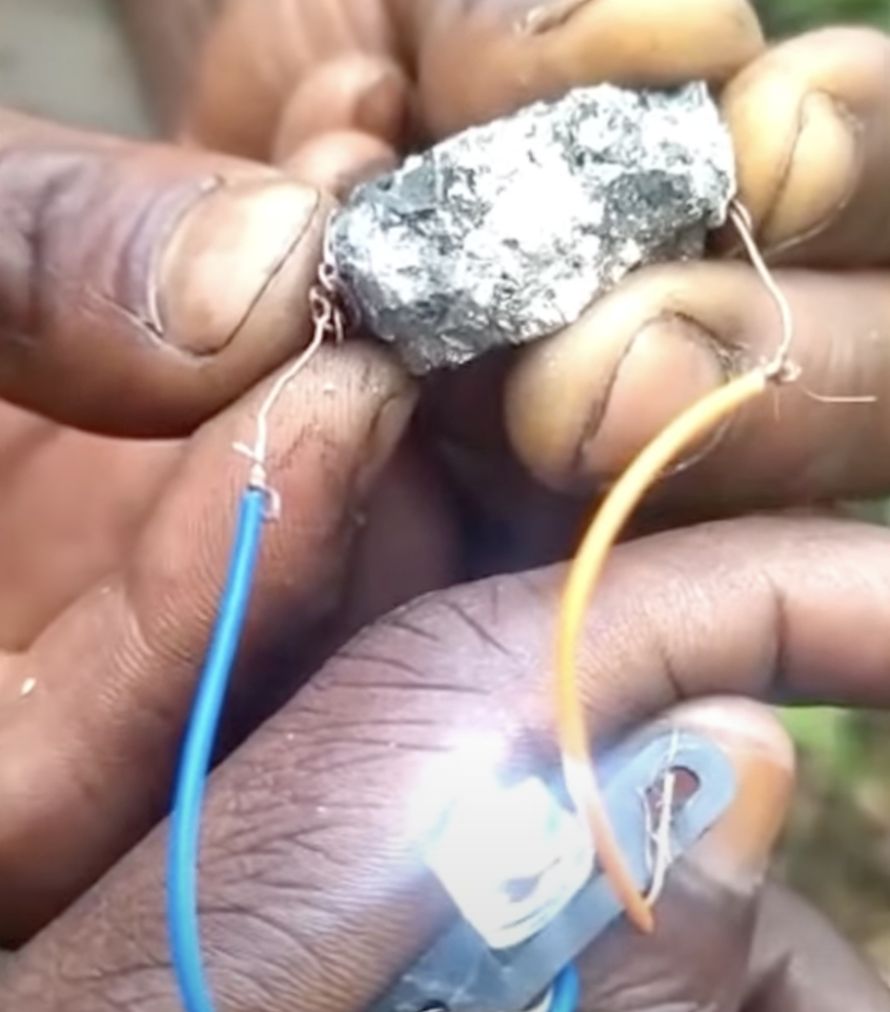ARTICLE AD BOX

The lamp lights. But why?
By Reality Check team
BBC News
Videos said to show that rocks found in Africa can produce electricity have been viewed millions of times online.
Some social media users are claiming they could be the answer to the continent's energy problems.
That's a big claim, so we've shown the footage to experts who've explained to us why such properties are highly unlikely.
Sparks fly in viral videos
One of the most widely shared videos appears to show electric sparks flying between two rocks as they come into contact.
The touching rocks appear to generate a spark, but is the 'glove' at the bottom a clue to how it's done?
It was shared by, among others, South African businessman Daniel Marven, who has over 800,000 followers. His tweet has now been viewed over two million times.
Another Twitter user commented on Mr Marven's post with a different video of a man apparently illuminating an LED light bulb by touching wires connecting it to a small piece of rock.
Marven also posted this video a few hours later, garnering more than a million views.
Both videos were picked up and used in a thread by popular Twitter page, African Archives. This went viral, with over 35 million views.
Where are the videos filmed?
In the footage of a man shown lighting up an electric bulb apparently using a rock, a voice can be heard speaking Swahili with an accent from the DR Congo.
With the video of the two flashing rocks, a reverse image search reveals that this previously appeared on the Facebook page of the Mohamed First University, in Oujda, Morocco in November last year - although the original video itself may have been uploaded earlier.
The caption just says: "Lithium!!?" but with no further details. The BBC has contacted the university but has yet to receive a reply.
One subsequent Twitter post claims these sparking rocks were found in Zimbabwe, saying this discovery "would help our country have...sustainable energy."
Zimbabwe is Africa's largest producer of lithium, a metallic element widely used in the production of batteries for electric cars and mobile devices.
Can electricity be generated from rocks?
"I am very sceptical that these videos represent free electrical energy," says Prof Stuart Haszeldine of the School of GeoSciences at Edinburgh University.
"I have never seen anything geologically like this and suggest the rocks are connected to electrical power sources not included in the tightly framed video images."
He says the presence of what looks like a gloved hand in the lower part of the video showing the sparking rocks is very revealing.
A gloved hand can clearly be seen in this video screenshot
This indicates, he suggests, that "current is flowing from the out-of-shot battery, through the rock being held with the glove (so the current doesn't flow through the gloved hand) and to earth via the second rock".
Metallic ores are good conductors of electricity, the glove is an insulator that prevents the current travelling through the person's body to the ground.
Turning to a video showing an illuminated LED bulb, Prof Haszeldine says that it is suspicious "because there are three hands (two people) in the demonstration".
"It looks to me that the current flows when two hands touch, and the wires are mostly illusion. So it may be just as interesting to get a close-up magician to look, and see if a trick of misdirection can be spotted."
A screenshot from the video shows a moment when the bulb remains lit even though one of the wires has become separated from the rock, a further indication that the rock has nothing to do with the circuit.
The light bulb remains on even when the wire is not touching the rock
The real power behind Congo's minerals
The DR Congo produces a wealth of valuable mineral ores, including coltan (columbite-tantalite).
When refined, coltan yields metallic tantalum, a heat-resistant powder that can hold a high electrical charge, according to Dr Munira Raji of Plymouth University in the UK.
These properties make it invaluable in the manufacture of components used in cell phones, laptops and other electronics.
Dr Raji says it's not possible to confirm whether any of the rocks shown in the videos are coltan without testing them in the geology lab, but even if they were, they cannot generate electricity on their own.
In that sense, she says, the claims that these rocks can produce electricity are wrong.
Image source, Getty Images
Image caption,Tantalum from coltan mined in DR Congo is vital for the manufacture of mobile phones
Dr Ikenna Okonkwo, a geology lecturer at the University of Nigeria, has also taken a look at the videos for us. He says the rocks look more like zinc or lead ore. And these ores, he says, certainly don't have the ability to power a bulb.
"Perhaps [they could hold] static electricity of the kind that happens with some fabrics, but it won't keep an LED light bulb powered." The videos, says Dr Okonkwo, do appear to be "some kind of trick".
Reporting by Chiagozie Nwonwu and Peter Mwai

 1 year ago
17
1 year ago
17








 English (US)
English (US)